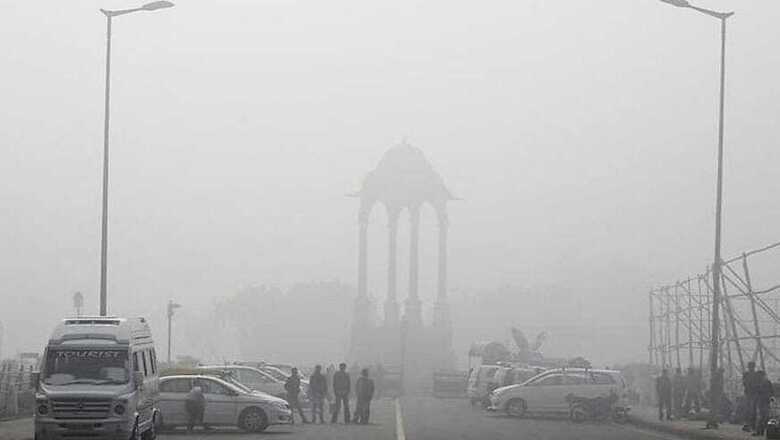
views
New Delhi: Thick poisonous smog enveloped Delhi, prompting Lt. Governor Anil Baijal and Chief Minister Arvind Kejriwal to call a high-level meeting to take on the rising pollution levels in the city. A slew of restrictions was announced to ensure a constant scrutiny of smog in the city. On Thursday, the Delhi government announced that it was reintroducing the odd-even rationing scheme.
Are the measures introduced to save the population of Delhi-NCR from deadly smog being followed in letter and spirit?
Measure 1: Stop all civic construction activities untill further orders. It is to be implemented by municipal corporations, DPCC and all construction agencies.
Location 1: Anand Vihar, New Delhi
Saud can hardly see through the thick screen of air filled with cement, dust from the red brick, coupled with the deadly smog, which has enveloped the capital city since the last few days. But he cannot stop his work.
“We have been directed to complete the construction by November 24. We just cannot stop working,” said Saud. Saud and his co-workers are not aware of any government directive or court orders. The workers are working without any protection against the deadly air.
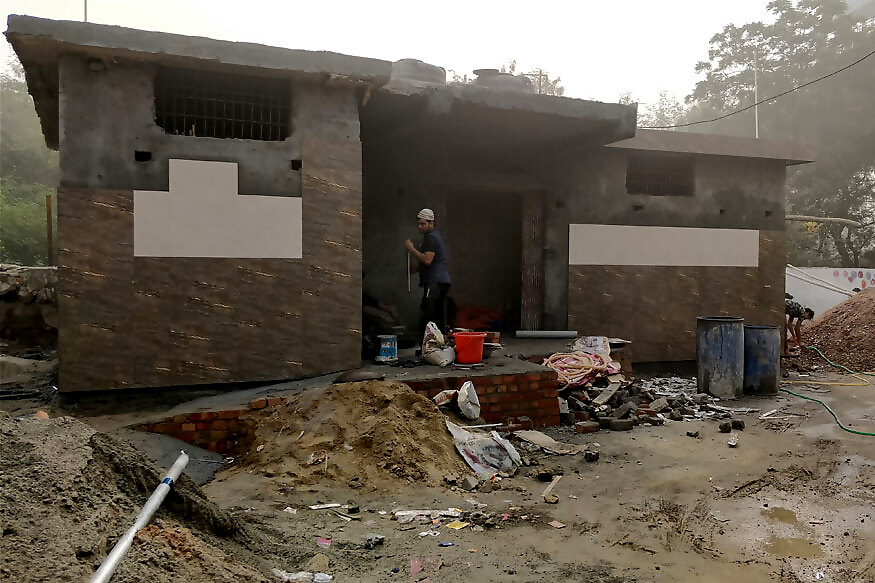
The toilet construction that is underway at Anand Vihar is being done in a hurry now. When asked about the government directive proscribing construction work, the response was, "This is a government work, the orders are from there.”
Location 2: Pari Chowk
In the next few months, the Pari Chowk metro would be functional under the Noida Metro Rail Corporation Ltd. and commuters would perhaps save a lot of time travelling to Greater Noida and Delhi. But the price the citizen of Delhi-NCR would pay for such construction work which is going on in full swing is life-threatening.
The labourers work on the site without any precaution. Soil and construction material lie uncovered starting from Pari Chowk to various sectors of Noida, where the metro construction is in progress. Workers are also grinding stone slabs underneath these flyovers without any covering whatsoever.
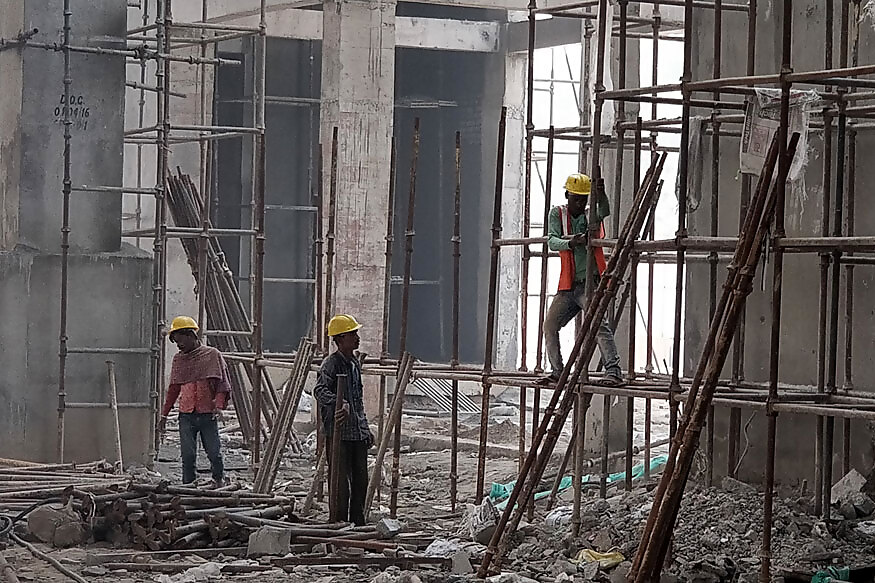
The workers, including women, are not aware of any government directive prohibiting such constructions until further orders. Abhishek Pal, a worker from Midnapore who works as a laborer, is dressed in his construction clothes and is wearing a yellow helmet. He is aware of the worsening condition not because of his continuous coughing but his three-year-old child, who has watery eyes and a running nose for the last one week.
“We have not received any such order to stop construction. But here, the construction is over and only finishing touches are being given. I have given orders to cover the loose construction material, and it would soon be covered,” said Keshav, the site in-charge.
Location 3: Under-Construction High-rise, Greater Noida
Similar conditions prevail even on private construction sites where ignorance about the ban on construction is palpable. Not only is the construction supervisor unaware of such directions but also defensive about the precautionary measures being taken.
A proposed 20-story building has been built up to the 11 floor and the construction continues unabated. Around 100 labourers are working on the site, exposed to hazardous air.
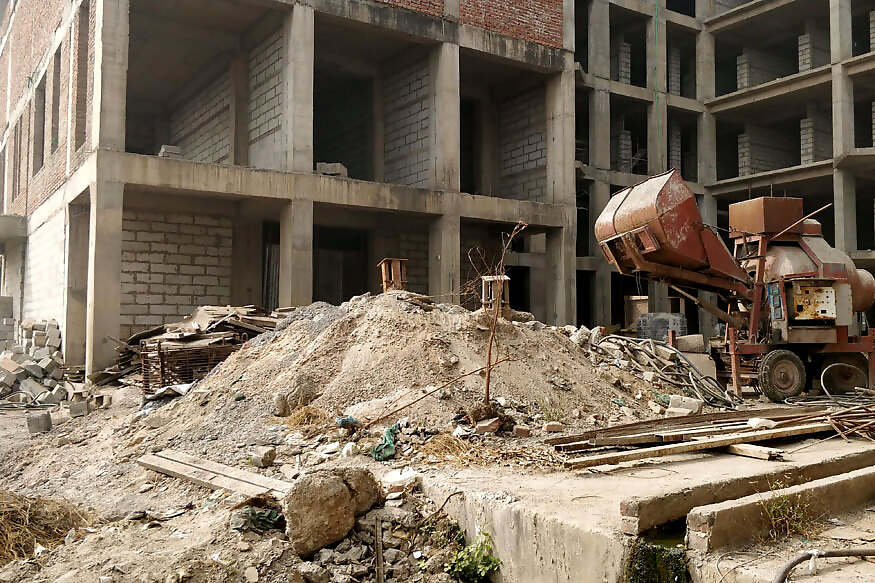
However, the supervisor maintained that “construction work is going on a slow scale, and can stop anytime.”
“Such a big construction site can accommodate up to 1000 workers or at least 500 labourers, but only about 100 are working. Plus, we are only allowing workers to get the iron fittings from the top floor to the ground floor,” said Hakim Singh, the site in-charge.
But the workers, without any masks, were laying bricks, with no idea about the ban on the activity they derive their livelihood from.
Location 4: Botanical Garden (Kalkaji- Botanical Garden Metro Stretch)
The construction work for the Botanical Garden–Kalkaji Metro stretch was also in full swing. Not only are workers busy constructing the soon-to-be-opened metro station, the floor polish releases a lot of dust particles and smoke, directly affecting the workers. “We have been given no masks, and hence our head and eyes hurt the most. Still, we get paid regularly. We cannot afford to miss out on working,” said Afzal, a worker.
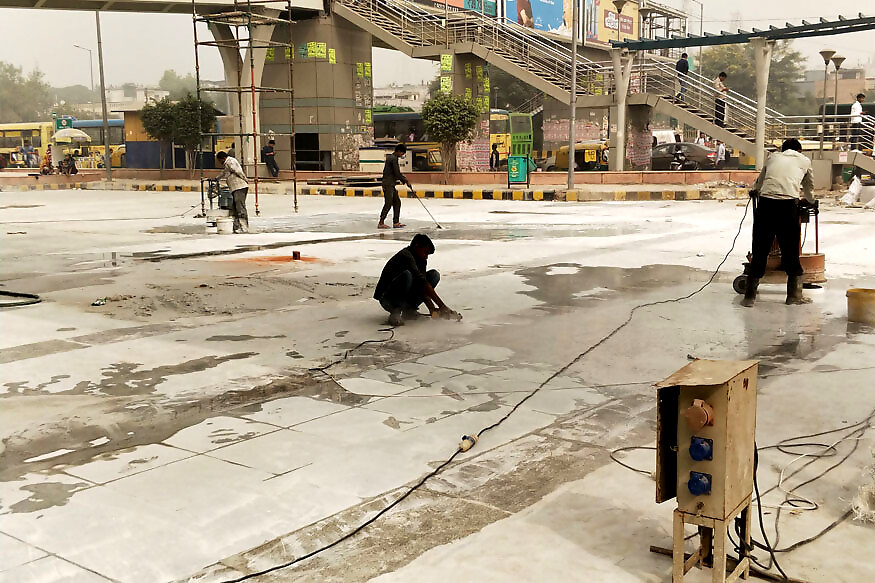
Measure 2: DTC and transport department to intensify public transport services
Location: Anand Vihar Bus Terminal and Seemapuri Depot
The movement of a large number of vehicles, one of the prime concerns, is what the reintroduction the Odd-Even scheme seeks to tackle.
In line with Thursday’s measure, the increase in the number of government buses plying on city roads was also announced. But employees at the Anand Vihar bus terminal and Seemapuri Depot told News18 that no such increase had taken place. A meager increase in the air-conditioned buses has been seen since the school buses are not on official duty.
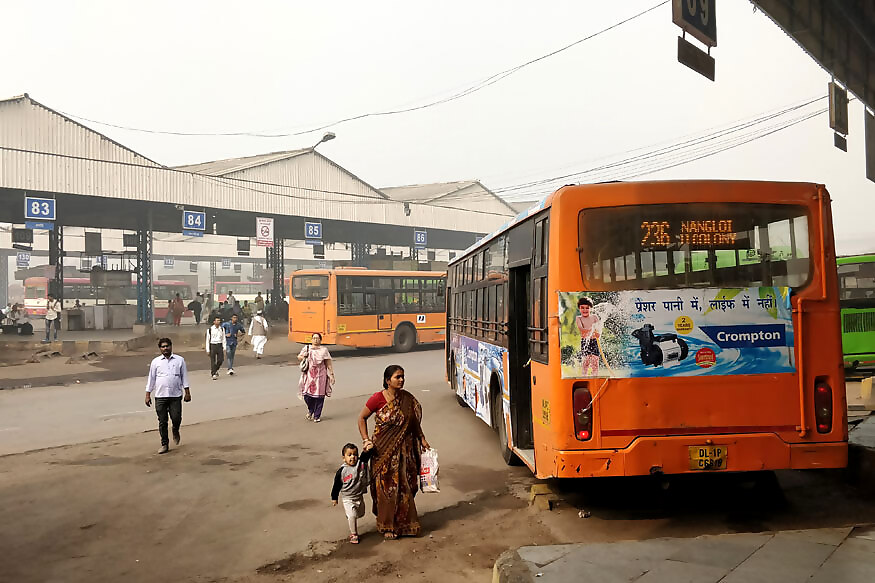
The buses in the city are divided between DTC buses and cluster ones. The former are the newer spacious ones whereas the cluster buses are the non-ac local buses. Mayal Pal, a worker at the front desk of the DTC counter of Anand Vihar Bus Terminal, told News18 that a total of 4500 buses run all over Delhi and no such increase had been ordered.
“Since schools have been closed, the buses which used to ply on school route are now plying on regular routes, therefore there is a little increase. But apart from that, no extra bus has been allotted,” said Pal.
Consultant worker at the ticketing department, Mahaveer Singh, told News18 that “about 60 buses ply from the Seemapuri depot, and there has been no increase in the number of buses.”
“Cluster buses work on kilometer-basis, and we earn revenue accordingly. There cannot be such a sudden increase in the number of buses,” Singh told News18.
Measure 3: Municipal corporations, DDA and DMRC to increase parking fees by four times
There are areas in Delhi-NCR where there are no government or official parking lots and even an empty lands have been transformed into parking areas by local people. In these areas, there is no implementation of such hike in fares.
Opposite to the Anand Vihar Railway station and adjacent to the bus terminus lies a barren piece of land filled with vehicles, but there are no fare charts or strict rules.
“Almost 100 cars are parked here during office hours, but the regular fare is Rs 20 for 10 hours. Sometimes people do not pay as there is no one to punish them,” says a local security guard.
However, the scene at Yamuna Bank parking lot managed by the DMRC is quite different. Fares have been hiked as per order and notice has been displayed too. But is it acting as a deterrent, compelling people to switch over to public transport? The officials do not think so.
“Previously, it used to be Rs 30 for 10 hours, but now, it is Rs 100 for 10 hours and Rs 200 for 24 hours. But people are still parking, though many are saying that they would not park here from tomorrow. However, only two to three people have returned back,” said Ratan Singh, the ticket manager in the parking lot.















Comments
0 comment